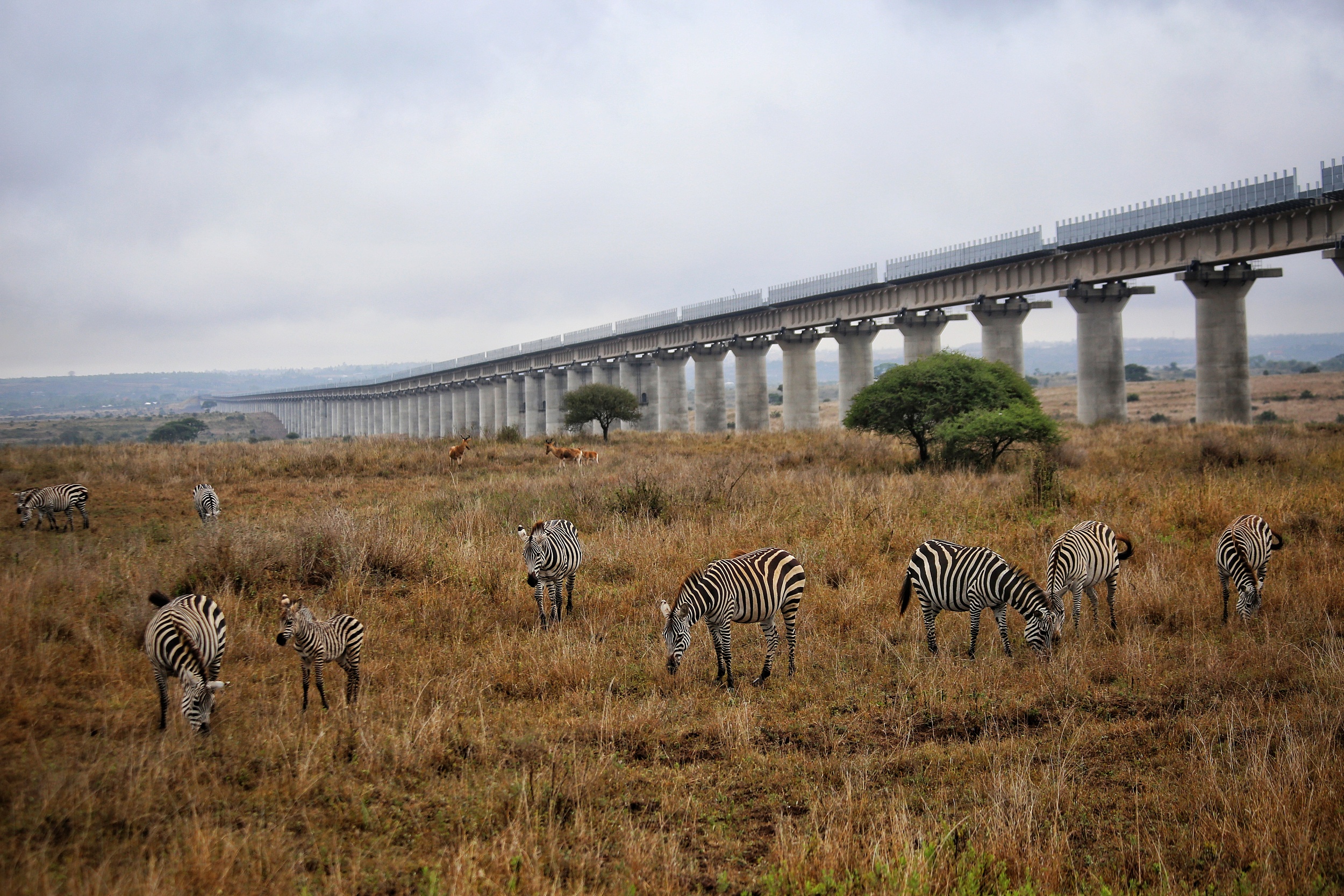Green Silk Road Creates Chinese Solutions for Global Issues

Wild animals near the Mombasa-Nairobi Standard Gauge Railway. (PHOTO: VCG)
By ZONG Shihan
In Kenya, wild animals such as giraffes migrate through the Mombasa-Nairobi Standard Gauge Railway (SGR) area, using passageways especially created for them to cross in safety. It's a spectacle of harmony between man and wildlife on the vast grasslands of East Africa.
In eastern Pakistan, the Karot hydropower station shines like a pearl on the Jhelum river. It is estimated to meet the power demands of around five million people with clean energy.
What's common to these two different projects in two different parts of the world is that they have both been implemented under the Belt and Road Initiative (BRI), which marked its 10th anniversary in 2023. Over the decade, China has collaborated with many countries to integrate green development in all areas of the BRI, which not only boosts the BRI partners' economic growth but also provides Chinese solutions for global environment governance.
Chinese solutions for global problems
Since the launch of the BRI, China has implemented a lot of green development projects, becoming a leader in global environmental governance from a participant.
In 2015, China proposed to highlight the concept of ecological civilization in investment, strengthen cooperation for protecting the ecological environment and biodiversity and addressing climate change, and jointly build the Green Silk Road.
From 2017 to 2022, China successively issued roadmaps for the construction of the Green Silk Road such as the Guidance on Promoting Green Belt and Road, the Belt and Road Ecological and Environmental Cooperation Plan, and the Green Investment Principles for the Belt and Road.
As of November 2023, China had signed more than 200 cooperation documents with over 150 countries and more than 30 international organizations for the joint construction of the BRI. The Green Silk Road is a key component of that.
The Belt and Road International Alliance for Green Development has gathered over 150 Chinese and foreign partners, hosted over 70 thematic activities for the Green Silk Road, and reached over 160 countries and regions.
Joining forces for a green world
In the last decade, China has achieved significant results in green infrastructure, green energy and green transportation, benefiting all countries involved in the co-construction of the BRI.
In 2014, when the SGR was being built, its route was planned through Kenya's largest wildlife reserve. Local environmentalists were concerned about the project's impact on the wildlife and the environment.
However, drawing on the design experience of China's Qinghai-Tibet Railway, the SGR established 14 large passageways and 79 bridges on the wildlife migration paths. All wildanimals passages have a net height of over 6.5 meters, which means even giraffes can pass through without having to bend their heads.
Marco Lambertini, special envoy of the World Wildlife Fund, once praised Chinese companies, saying that they have proved that infrastructure construction can be environmentally friendly.
The Karot hydropower station, a priority project for energy cooperation along the China-Pakistan Economic Corridor, will generate an average of 3.2 billion kilowatt-hours of electricity each year.
The clean energy is expected to save about 1.4 million tons of standard coal per year and reduce carbon dioxide emissions by about 3.5 million tons. It will not only promote Pakistan's energy construction and economic development, but also contribute to the global goal of carbon neutrality.
As the UN Secretary General António Guterres said, the Green Silk Road is an important tool that can help us all pull us out of the dead ends of the past, and set us on a new pathway that benefits people and planet alike.






